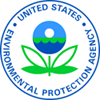Newsroom
All News Releases By Date
Six Entities in EPA Region 7 Selected for $2.2M in Brownfields Grants to Help Clean and Redevelop Contaminated Properties
Release Date: 05/28/2014
Contact Information: Chris Whitley, 913-551-7394, [email protected]
Environmental News
FOR IMMEDIATE RELEASE
 (Lenexa, Kan., May 28, 2014) - Six cities or non-profit groups in EPA Region 7 have been selected to receive a total of $2,298,300 in EPA brownfields funding to assess, clean and plan for the redevelopment of contaminated properties, boosting local economies and leveraging jobs while protecting public health and the environment.
(Lenexa, Kan., May 28, 2014) - Six cities or non-profit groups in EPA Region 7 have been selected to receive a total of $2,298,300 in EPA brownfields funding to assess, clean and plan for the redevelopment of contaminated properties, boosting local economies and leveraging jobs while protecting public health and the environment.
Provided through EPA’s Brownfields Assessment, Revolving Loan Fund and Cleanup (ARC) grants program, these funds will give communities and businesses a chance to return economic stability to under-served and economically disadvantaged neighborhoods through the assessment and cleanup of abandoned industrial and commercial properties – places where environmental cleanups and new jobs are most needed.
Nationally, EPA announced today that 171 communities or eligible entities will receive a total of $67 million in Brownfields ARC grants for fiscal year 2014, including these six successful applicants in Region 7:
- The City of Oskaloosa, Iowa, has been selected to receive a total of $400,000 in grants, including $200,000 to conduct 15 Phase I and eight Phase II environmental site assessments for hazardous waste; and another $200,000 to conduct the same tasks at sites with potential petroleum contamination.
- The City of Coffeyville, Kan., has been selected to receive a total of $400,000 in grants, including $200,000 to conduct 10 to 12 Phase I environmental site assessments for hazardous waste and petroleum; and another $200,000 to conduct six to eight Phase II environmental site assessments, perform cleanup planning, and support community outreach activities.
- The Coffeyville, Kan., Community Enhancement Foundation has been selected to receive $200,000 to clean up the former Rail Bed property located north and west of the intersection of 1st and Poplar in Coffeyville. The vacant site, historically used as a rail line from the 1800s until 1982, is contaminated with metals, including cadmium, arsenic and zinc. Grant funds will also be used to develop a voluntary cleanup plan, a sampling and analysis plan, and for community outreach activities.
- The Mo-Kan Regional Council, of St. Joseph, Mo., serving communities in northwest Missouri and northeast Kansas, has been selected to receive a total of $1 million in grants, including $573,100 for work on hazardous substances and $426,900 for work on petroleum contamination. The funds will be used to capitalize a revolving loan fund from which Mo-Kan will provide loans and subgrants to support cleanup activities, community engagement and cleanup planning.
- The North Central Missouri Regional Water Commission, of Sullivan County, Mo., has been selected to receive $98,300 to clean up eight parcels of land located along East Locust Creek in Sullivan County, and conduct community outreach activities. This land is expected to be part of the future 2,235-acre East Locust Creek Reservoir, which will address the acute water shortage for Sullivan and adjacent counties. The vacant properties were historically used for residential, agricultural and commercial purposes, and are contaminated by PCBs, metals and inorganic contaminants.
- The City of Gering, Neb., has been selected to receive $200,000 to conduct 14 Phase I and six Phase II environmental site assessments for hazardous substances, engage in cleanup planning for four sites, and perform community outreach activities.
Brownfields are defined as those properties whose expansion, redevelopment, or reuse may be complicated by the presence or potential presence of a hazardous substance, pollutant, or contaminant. Brownfields sites include all "real property," including residential, commercial and industrial properties. It is estimated that there are more than 450,000 brownfields in the U.S. Cleaning up and reinvesting in these properties increases local tax bases, facilitates job growth, utilizes existing infrastructure, takes development pressures off of undeveloped, open land, and both improves and protects the environment.
Learn more about EPA’s Brownfields program
Learn more about EPA Region 7
View all Region 7 news releases
Connect with EPA Region 7 on Facebook: www.facebook.com/eparegion7
 View selected historical press releases from 1970 to 1998 in the EPA History website.
View selected historical press releases from 1970 to 1998 in the EPA History website.

